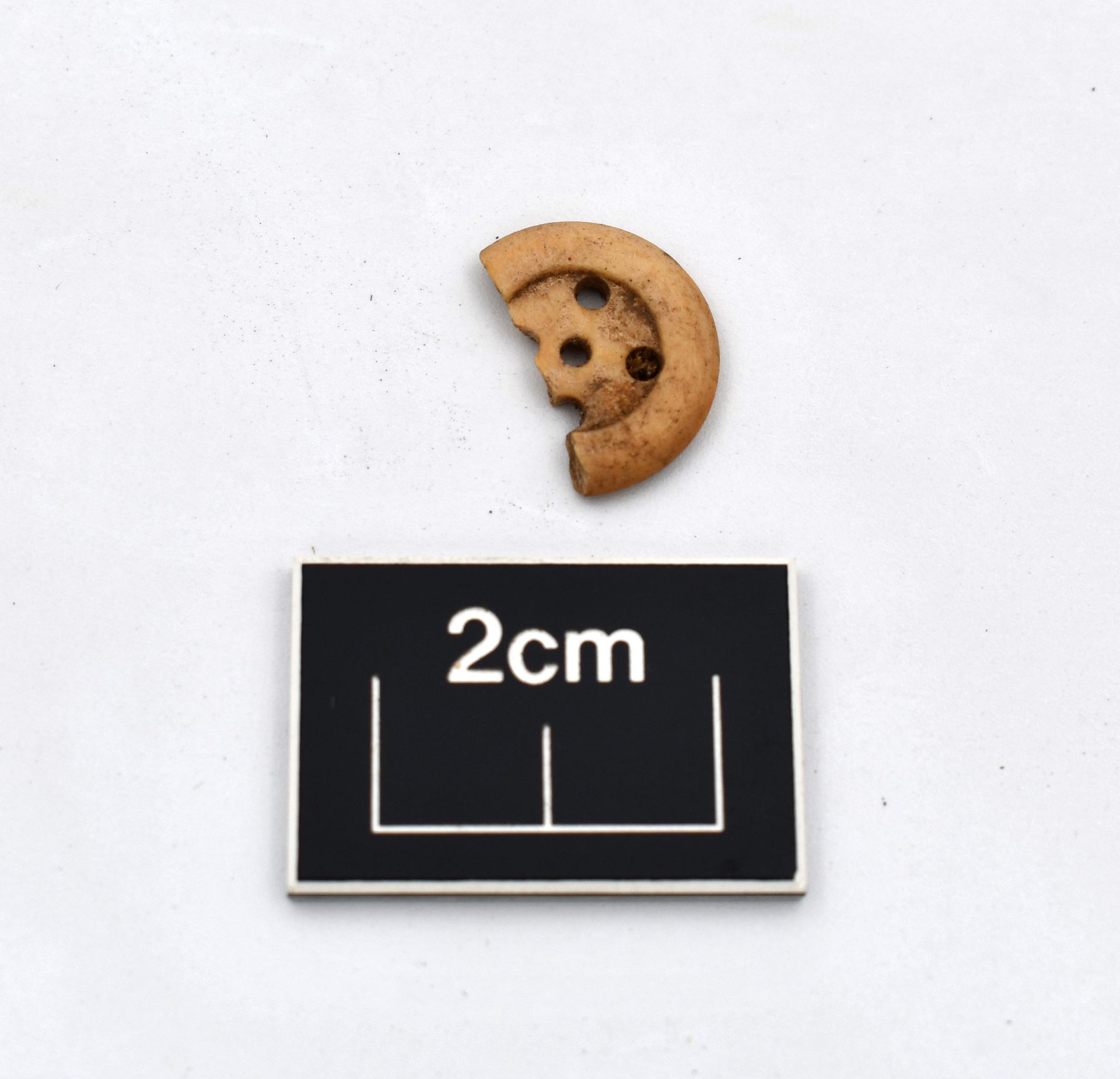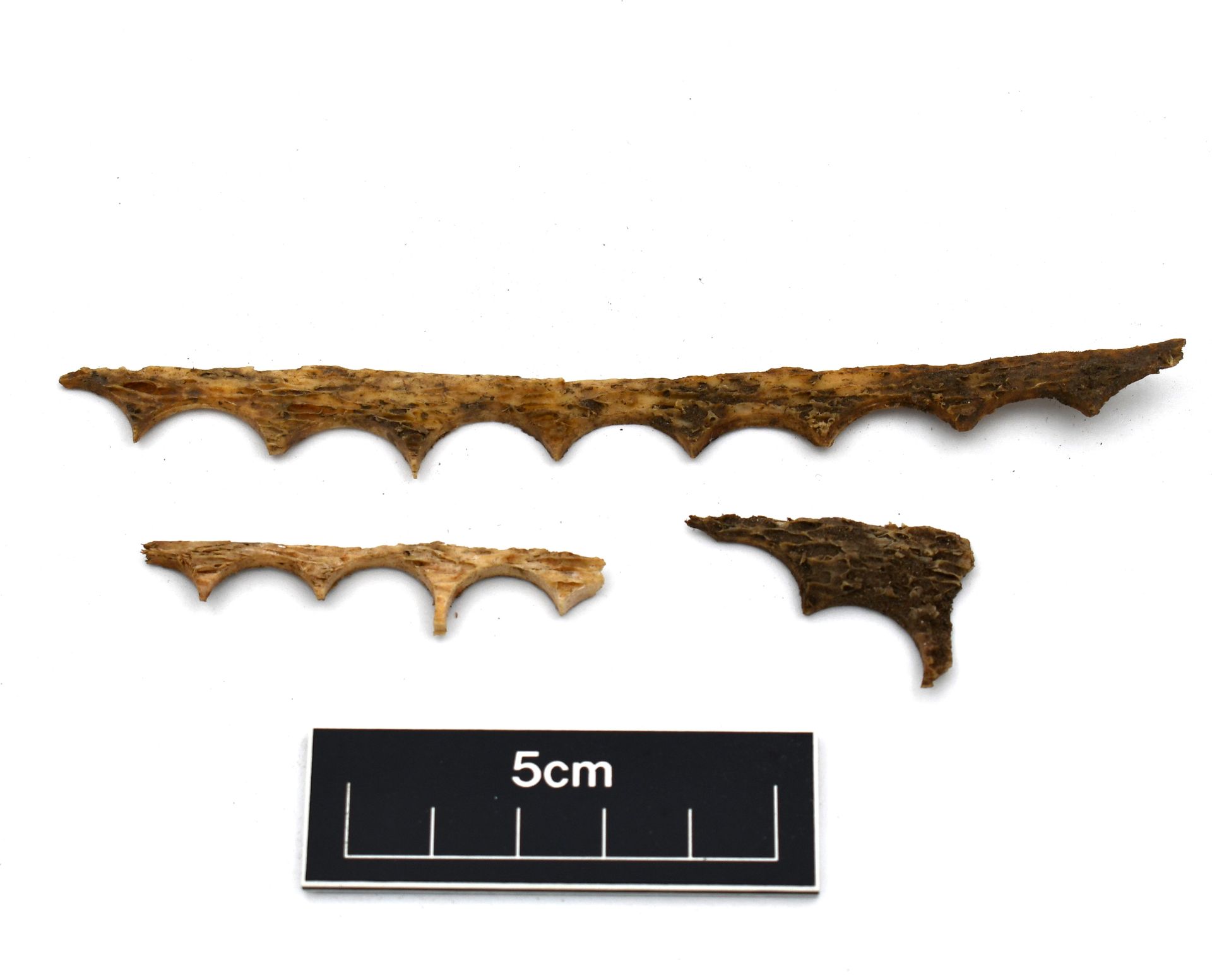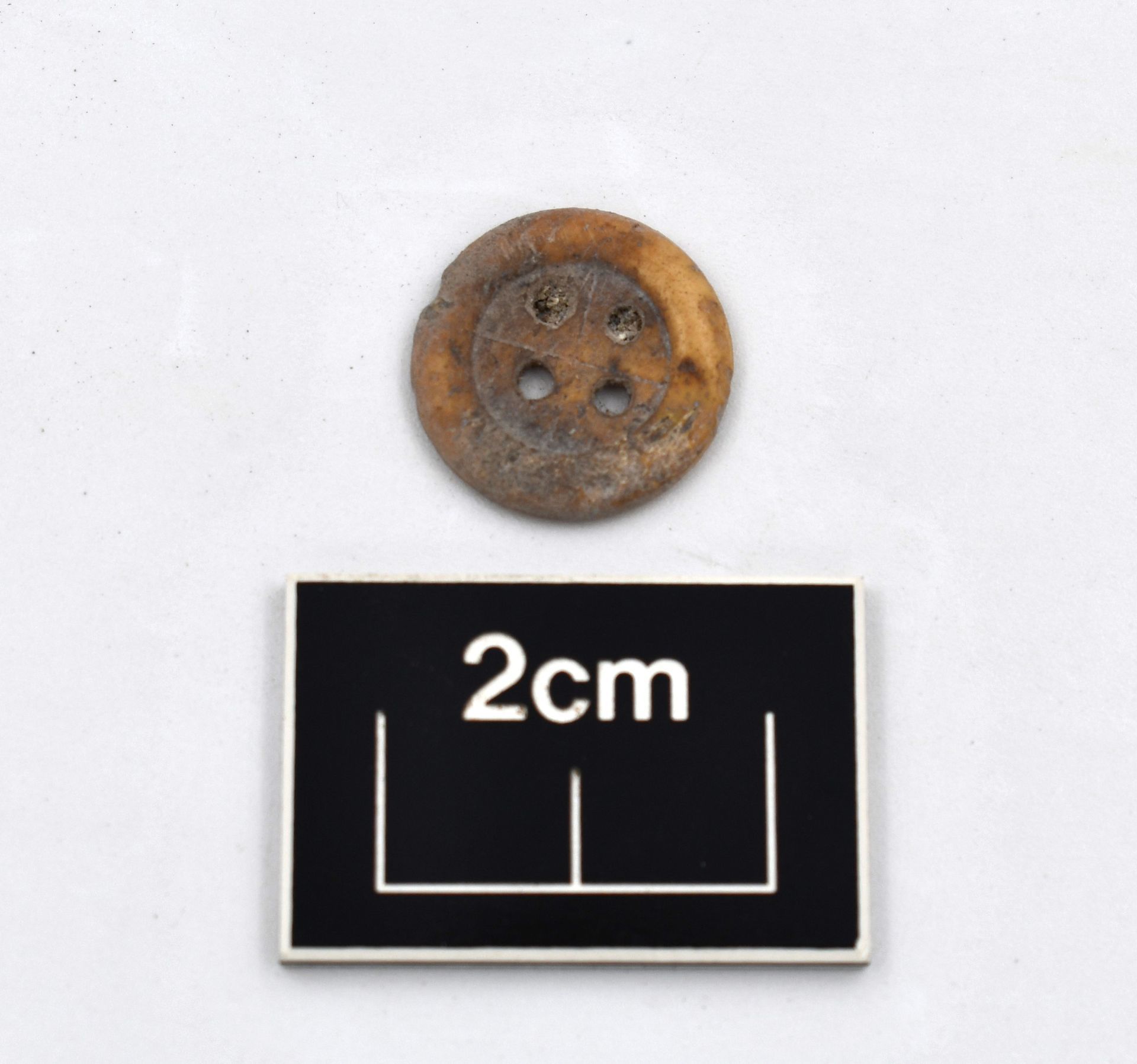Bone disc button manufacture at Anglesea Barracks, Hobart

Bone disc button manufacturing debris has been recovered at archaeological sites in eastern North America, the Caribbean and Australia. Generally dating to the late eighteenth or early nineteenth centuries, these provide evidence of a widespread and early industry associated with British colonial military, slave and convict sites. Dozens of archaeological sites internationally and within Australia, often prisons, alms-houses and British military sites, provide evidence of bone disc button manufacturing.
Cattle ribs and scapula were most often used for bone disc manufacture, though in the Caribbean turtle shell carapace pieces (the underside of the shell) were also used. The ribs were cut into rectangular segments and split lengthwise (using heavy-bladed implements such as a machete, cleaver or hatchet), creating two pieces with cancellous (spongy) bone on one side and smooth, cortical bone on the other. Once the bone pieces were prepared, hand-held braces or centre bits (referred to as ‘button bits’) were used to extract the discs. Unsuccessful extractions and broken discs were often left in place and discarded (as shown in the image above) (Klippel and Price 2007:133-135).
Salt beef, a staple of the British colonial military and naval forces overseas, was often barrelled in pieces no greater than 8 pounds in weight, which is consistent with a 150mm long-rib segment from a side of mature cattle. Cattle ribs cut into 150mm to 200mm pieces were recovered from the 1841 shipwreck of the William Salthouse, further suggesting that long-ribs were used for salt beef. Stable isotope analysis of bone disc debris from Brimstone Hill Fortress, St. Kitts, found that the cows had been raised in England and eastern North America. The pieces used for bone disc manufacture likely originated in barrels of salt beef which had already travelled overseas to feed the colonial population (particularly military personnel and those under government control) (Klippel and Price 2007:133-135).
Bone disc buttons provide a tangible connection between British colonial foodways and early colonial clothing and uniforms
The bone disc button manufacturing debris pictured here came from beneath the Second Soldiers Barracks (Officers Mess) at Anglesea Barracks, Hobart. Bone buttons recovered in the same context are also pictured. Buttons, thread and needles were often issued to convicts to enable them to fix their own clothing, and presumably a similar process occurred with military personnel. Sew-through buttons were used on slop clothing issued to clothe convicts, civilians and military personnel when off duty, used as fixtures on trousers, shirts, jackets, undergarments and frocks (Stocks 2008:36). Buttons 18mm, 14mm and 11mm in diameter were made using these bone pieces, and no good portion of bone appears to have been wasted, as multiple rows of disc extraction are visible on at least two of the pieces recovered. The larger 18mm buttons would have been used for coats, jackets, pyjamas and trousers, while the remaining buttons would have been used for underclothing, waistcoats and shirts (Lyndbergh 1999:51).
Single hole bone discs were often also used as ‘molds’ for cloth or thread-covered buttons. Military garments from the same period are often depicted with buttons of the same material as the clothing they are attached to, suggesting that the bone discs may have been used to make buttons for military uniforms (Klippel and Price 2007:138-139). Some of the hundreds of fabric scraps recovered from the same place as the disc-making debris underneath the Second Soldiers Barracks at Anglesea were likely used to cover the button discs and clothe the burgeoning population of soldiers in Hobart and Van Diemen’s Land more broadly.
Bone disc buttons illustrate the interconnectedness of British colonial settlements, in terms of diet, clothing practices and movement of people
Bone disc-making debris, or ‘button blanks’, were recovered from underneath the floorboards of the Second Soldier Barracks (Officers Mess) at Anglesea Barracks, Hobart, alongside hundreds of textile pieces, scraps, old leather boot pieces and leather offcuts. The bone discs and buttons may have originated as food scraps from the salt-beef rations imported by the British government to feed military personnel, convicts and in some cases civilians.
The single-hole bone discs were likely used for military uniforms, while the three, four or five-hole bone buttons may have been issued with (and on) government-issued ‘slops’ clothing provided to convicts, civilians and military personnel to wear while off duty. These artefacts provide a connection to a widespread and early form of industry operating at military, prison and slave sites across the former British empire.
References
Klippel, W. E. and B. E. Price (2007), 'Bone Disc Manufacturing Debris from Newfoundland to Antigua During the Historic Period', in Bones as Tools: Current Methods and Interpretations in Worked Bone Studies, edited by C. G. St-Pierre and R. B. Walker, BAR International Series 1622, 133-142.
Lindbergh, J. (1999), 'Buttoning Down Archaeology', Australian Historical Archaeology, 17:50-57.
Stocks, R. (2008), 'New Evidence for Local Manufacture of Artefacts at Parramatta, 1790-1830', Australian Historical Archaeology, 26:29-43.
-
Five-hole sew-through button from Anglesea Barracks
ButtonPhoto By: Latitude Heritage Pty Ltd
-
Bone disc manufacturing debris from Anglesea Barracks
ButtonPhoto By: Latitude Heritage Pty Ltd
-
Bone disc manufacturing debris from Anglesea Barracks
ButtonPhoto By: Latitude Heritage Pty Ltd
-
Hand-made four-hole sew through bone button, Anglesea Barracks
ButtonPhoto by: Latitude Heritage Pty Ltd
Latitude Heritage acknowledges the Traditional Custodians of the lands in which we work, the palawa/pakana in Lutruwita/Tasmania and the Wurundjeri Woi Wurrung in Naarm/Melbourne, VIC. We pay our respects to Elders past and present, extending these respects to all First Nations groups whose land and waters on which we work.
We recognise their continued connection to Country and acknowledge that they never ceded sovereignty.





